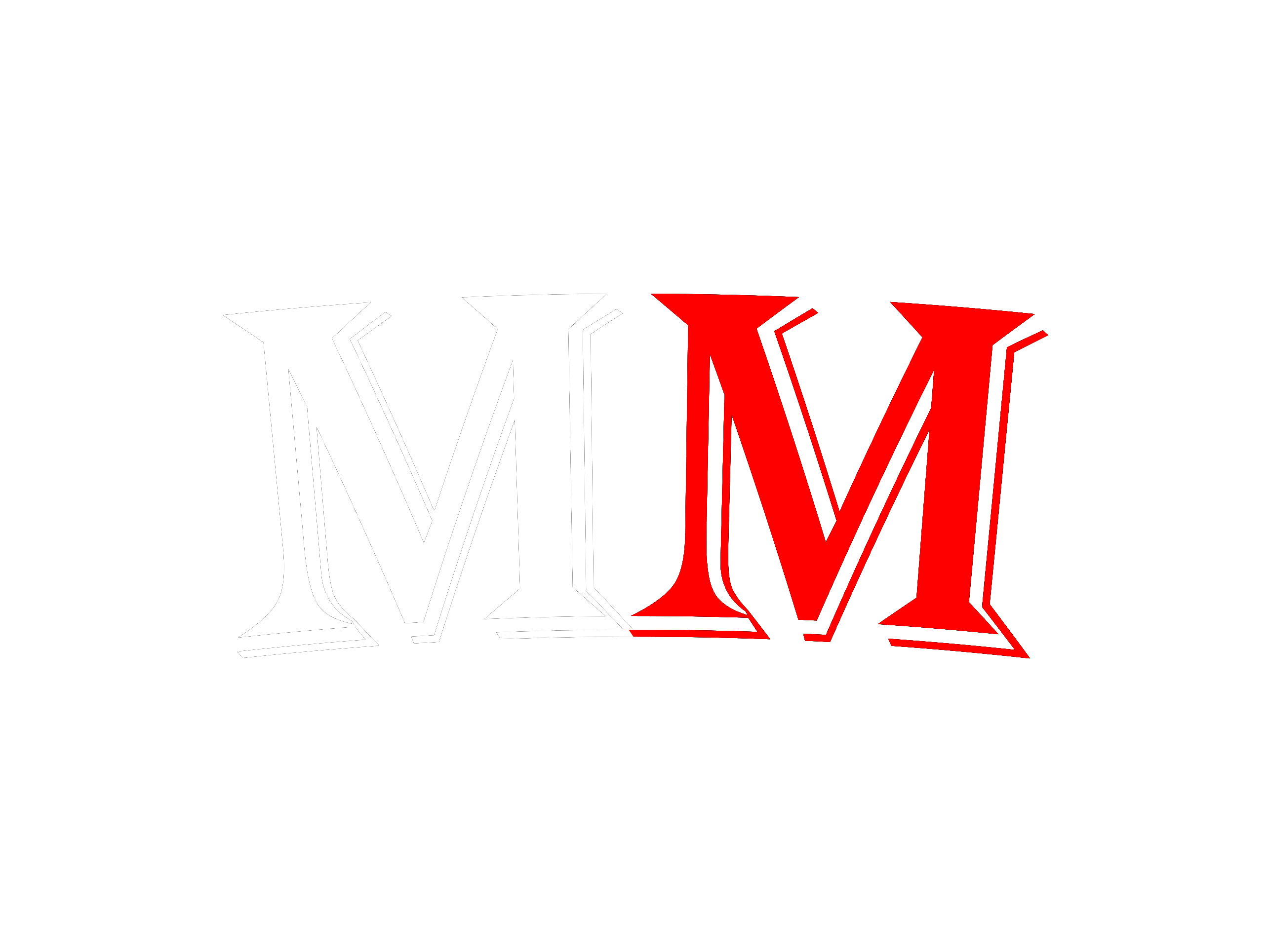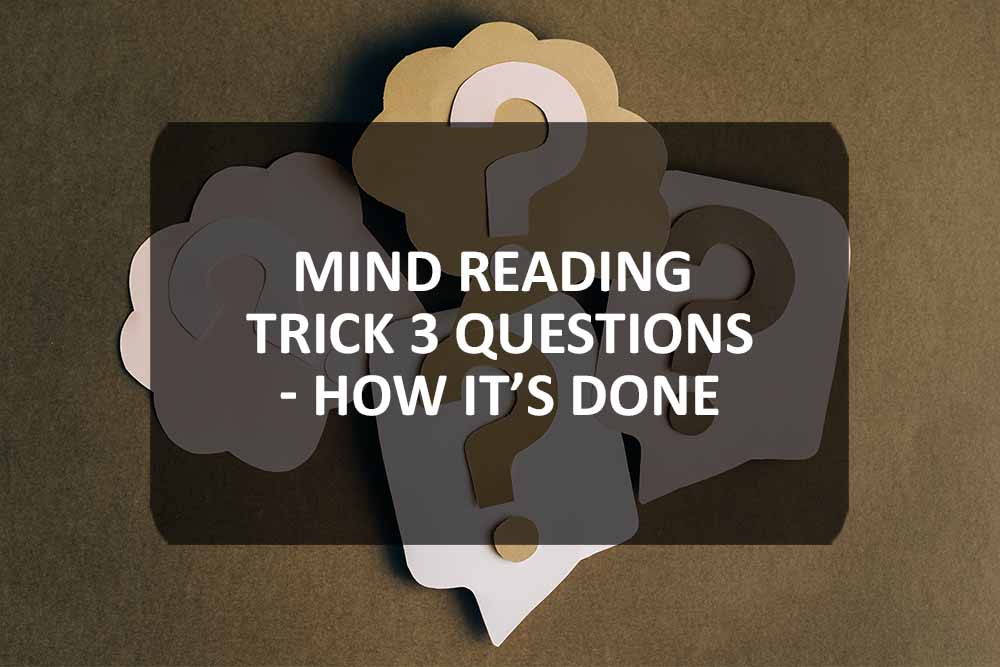Most mentalist tricks focus on having one big reveal in the end.
But what if there was a way to read your spectators multiple times in a single act?
Wouldn’t that be marvelous?
Correctly guessing what someone’s thinking once during a trick is a feat in itself. Being able to do it over and over and over again lets you take your performance to the next level.
There’s a technique called the One-Ahead that allows you to do exactly that.
Curious? I knew you would be!
This is why, here, I’m going to show you the mind-reading trick 3 questions – how it’s done.
The One Ahead History
Sometime during the 1850s to the 1860s, Charles H. Foster, an American medium, popularized a trick used by magicians and mentalists alike called Billet Reading.
Formerly, the trick required audience members to write down statements or questions on a piece of paper, put them in envelopes, and seal them. The mentalist then takes the envelopes one by one and divines what’s written in each.
The more envelopes the mentalist goes through, the more he can show how good he is at it. He accurately reads each envelope’s content one after the other — and the audience members confirm it!
What happens is that the mentalist uses a technique called the One Ahead during his performance. It gives him access to the statements beforehand, which gives the illusion that he can work out what was inside the envelopes.
The trick also involved a helper in the audience, whose role is to claim the first statement the mentalist deduces is correct. In truth, that’s a predetermined response — its main objective is to allow the mentalist to open the envelope and see what’s inside.
When he opens it, he now knows the content of the first envelope. He uses it to read the content of the second envelope. When he announces it, the owner of that statement claims it, strengthening the illusion.
The mentalist repeats this until he goes through all envelopes. If there were ten envelopes, he’ll get everyone. Impressive, no?
How It’s Done Today
Similar to other mentalism tricks and techniques, the One Ahead has been refined through the years. These days, mentalists don’t have helpers in the audience anymore. Nowadays, all it takes is three questions, and you’ll achieve a similar effect to Billet Reading.
Although there are several ways to do this trick, it always involves the same three steps.
The first is getting the statement that gives you your One Ahead. The second is the process of finding out the succeeding ones. The last is doing your reveal.
The last two parts always follow the same principle. Getting your One Ahead, however, can be done in various ways.
Here are steps to doing a mind-reading trick in 3 questions.
One: Getting Your One Ahead
The first thing you need to do is establish what gives you your One Ahead.
In our earlier example, the One Ahead was a predetermined statement the mentalist memorized and confirmed by the helper. Now, you can choose from the following:
- Use personal knowledge. If your spectator is a friend, you specifically choose something that he’s likely to answer. You can aim to ask about his favorite person (which will likely be his best friend) or something connected to her fear (whether it’s an animal or a phobia).
You can do something similar in this video:
Whatever it is, this can be your One Ahead. Always remember, though, that your One Ahead is the first thing you write but the last thing you ask.
- Use Magician’s Choice. If you’re planning to have your spectator choose between several items for your One Ahead, you can use Magician’s Choice to ensure he picks what you write down. If you want him to name a book from a list of items, that’s what you write, and prepare to use the Magician’s Choice later on.
- Force a Card. If your One Ahead involves your spectator choosing a card, the best way to get your One Ahead is to force a card. If you’re going in this direction, you’ll need to do it before anything else.
The good thing about a criss-cross force is it’s a simple technique. Ask your spectator to shuffle the cards and have him spread the cards facing you — say that you want to make sure it’s a regular, complete deck. In reality, what you’re marking is the first card — let’s say it’s the nine of diamonds.
Ask your spectator to cut the cards. Have him place the bottom half on top of the upper half, but laterally (so it looks like a cross, hence the name). When the deck is in that position, tell him you’ll come back to that later on.
To give you a better idea of how you can do it, watch this video of Chris Ramsay using the criss-cross force:
If you want to learn more about Magician’s Choice, don’t worry — we’ll break it down in detail in the second part.
Two: Getting the Succeeding Answers
This trick requires you to ask three questions — your One Ahead is the answer to one. Part two revolves around getting the remaining responses.
Question 1
The first question you ask your spectator can be anything under the sun. Let’s say you ask him to choose a number between 1 and 1,000. Give him a look as if you’re trying to read his mind, then write down what you mind-read on a piece of paper.
At this point, you have no idea what his answer is. What you’re writing down is your One Ahead.
For example, write down “book” if you’re planning to have him pick it from several items using Magician’s Choice towards the end of the performance.
Ask your spectator what his answer was — you can always say you’re doing this for the audience, so they can all verify it later on. He says he thought of 27. Ask him to choose another number — something with three digits to make it more challenging. He settled on 825.
Question 2
Move on to your next question. Again, this can be about anything. Let’s say you ask about a dish your spectator hasn’t eaten for the longest time. After giving enough time, write your mind-read message.
At this point, what you scribble down are the numbers he picked earlier.
Since you made him choose a second one, you can write 27, cross it out, and put 825.
Question 3
Now, ask him your third question, which ties into your One Ahead.
Now, here’s how to force your One Ahead to your spectators:
- If you’re using Magician’s Choice: This technique is best used if you’re asking your spectator to choose an item from several. For example, you have a book, a bottle, and a brush. Earlier, you wrote down “Book”, so you have to ensure your spectator picks that for the trick to work.
Ask him to choose one of the three items. Best-case scenario, he selects the book straight away, and you can proceed to the reveal. If he picks differently, you eliminate it and ask him to choose another. Repeat the process until the book is the item left.
- If you’re using the Criss-Cross Force: Remember, you peaked at the first card in the deck at the start. It means the first thing you should have written down was nine of diamonds. You set up the cards even before you asked the first question.
Now draw your spectator’s attention back to the cards. Ask him to remove the top half of the deck, which exposes the bottom half. Have him get the first card from the lower pile — say to keep it in his head because you’re going to read his mind.
Because of the criss-cross force, your spectator’s card is the nine of hearts.
Three: Reveal the Responses
At this point, you’ve asked three questions and written three answers. All the paper pieces should be rolled up in a container. What you need to do now is reveal them one by one.
Your spectator will be amazed how you managed to get every single answer correctly.
Wrapping It Up
The One Ahead may look like it’s complicated to execute, but with some well-placed techniques, you’ll realize it’s not that challenging.
You can give a performance based on a classic trick. And, with a couple of tweaks here and there, you can give it a modern twist, making it entirely your own.
Because there are several ways to do this trick, it’s best to find methods that suit your style. Once you’ve figured out which those are, make sure you take the time to practice. It ensures your moves are flawless and match your script.
When you’re ready, perform it for your friends and amaze them with your performance!
So that was it. You were able to do a mind-reading trick by just asking 3 questions.

